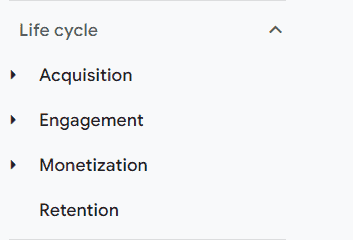
Google Analytics (GA4) has officially replaced Universal Analytics (UA). UA stopped processing data on July 1, 2023.
If you are still among those marketers who haven’t considered the shift to GA4; Now is the time.
Here, we will help you get comfortable with GA4!
What is GA4?
GA4 is the next generation of Google Analytics. It offers a more privacy-focused and user-centric approach to data tracking your users across websites and apps.
Google announced the launch of GA4 in July 2019, it was then available in Beta. Then, later in October 2020, it had its hard launch. UA can still be installed, but GA4 is the go-to Google Analytics update.
Google has upped its analytics game with the help of machine learning, and relying less on first-party cookies. Therefore, even when users choose not to accept first-party cookies, GA4 can still provide insights into website performance with the help of conversion modeling.
With GA4, you get a powerful analytics tool complying with cookieless tracking, which means less hassle and more privacy for your website visitors.
UA and GA4: Key Differences
Universal Analytics relies on a session-based model, which tracks user interactions within a specific session. Google Analytics 4 uses an event-based data model that tracks user interactions within the website or app.
In UA, multiple hit types like page views, events, user timing, etc are tracked and in GA4 all hit types are registered as events.
Furthermore, GA4 is about understanding user journeys across devices and platforms, and UA focuses on tracking page views and sessions.
GA4 Features: What’s New?
Track Custom Events
You have already read about GA4 adopting an event-driven data model. This allows it to track custom events, which means you can set up custom events specific to your website. Thus, you get more tailored data analysis and insights relevant to your website.
Enhanced User Identity
GA4 enhances user identification by incorporating an improved user identity system. It goes beyond relying solely on cookies and client IDs, allowing for better tracking of users across different devices and platforms. This is crucial in today’s multi-device, multi-channel landscape, providing marketers and analysts with a more accurate and holistic view of user journeys.
Unique user IDs are created during login. When a new user signs in, their email address generates a unique ID, then sends these to GA4 for improved analytics.
Machine Learning and Predictive Metrics
One of the standout features of GA4 is its integration of machine learning capabilities. This includes predictive metrics that go beyond traditional reporting.
GA4 can predict user behavior, such as the likelihood of a user making a purchase or the probability of churn. This empowers businesses to take proactive actions based on data-driven insights and predictions.
Analysis Hub for Deeper Insights
GA4 introduces the Analysis Hub, a powerful tool that enables users to explore and analyze their data more comprehensively. This feature allows for customized ad-hoc analysis, providing the flexibility to answer specific business questions.
With the Analysis Hub, users can create detailed reports, apply advanced filters, and gain deeper insights into their data, all within the GA4 interface.
Cross-Platform Tracking
Recognizing the importance of cross-platform user journeys, GA4 design has efficient cross-platform tracking capabilities. It allows businesses to track user interactions not only on websites but also across mobile apps and other digital platforms.
This approach provides a complete picture of how users engage with a brand across various touchpoints.
Advanced Audience Building Features
GA4 introduces advanced audience-building features, including machine learning-powered predictive audiences.
Marketers can leverage these audiences to target users more effectively and personalize their marketing efforts. This feature goes beyond traditional audience segmentation, allowing for a more dynamic and predictive approach to audience creation.
Automatic Event Tracking
In GA4, event tracking is more accessible with automatic event tracking for common interactions. While manual event tagging is still an option, the platform can now automatically recognize and track standard interactions, reducing the need for extensive manual configuration.
This streamlines the setup process and makes it easier for users to get started with event tracking.
GA4 Reports

Data is presented in standard reports by default in Google Analytics. Those reports are organized by phases of a common customer lifecycle: acquisition, engagement, monetization, and retention.
Make Most Out of Your GA4 Data!
Learn more about GA4 and use it for better insights. Experiment with new features and adjust workflows to achieve your goals with the help of user-centric measurements and reporting tools.
You must have gained an understanding of the main new features of Google Analytics 4 and how they can help you with digital marketing and improving your brand. Make e-commerce or business websites strong with GA4 data and analytics.
